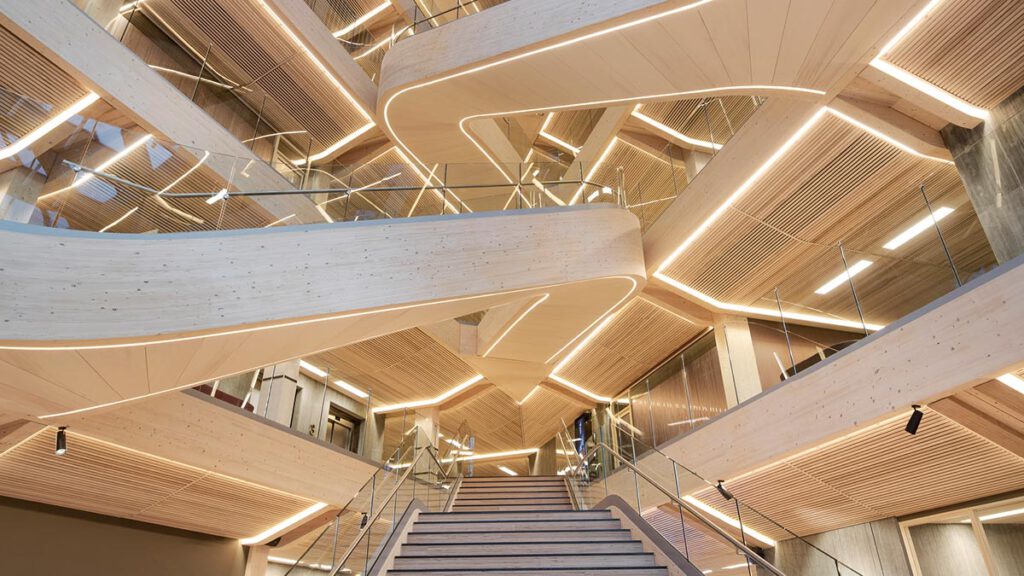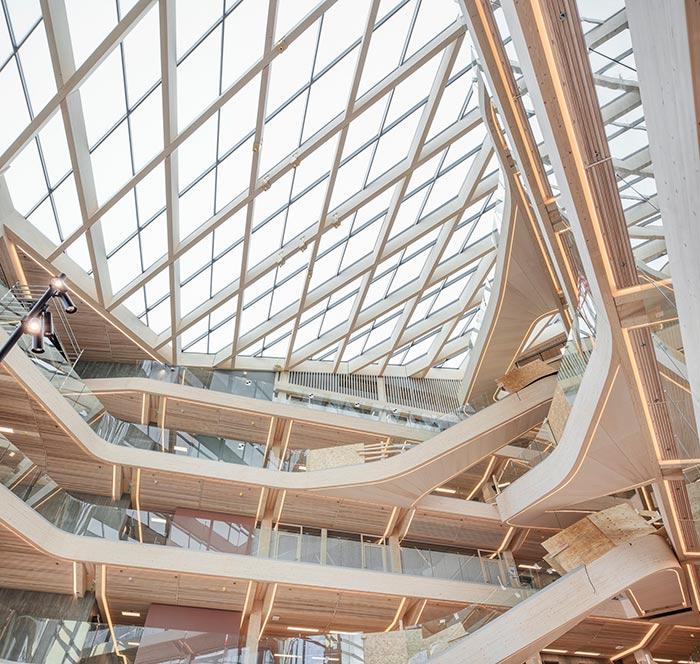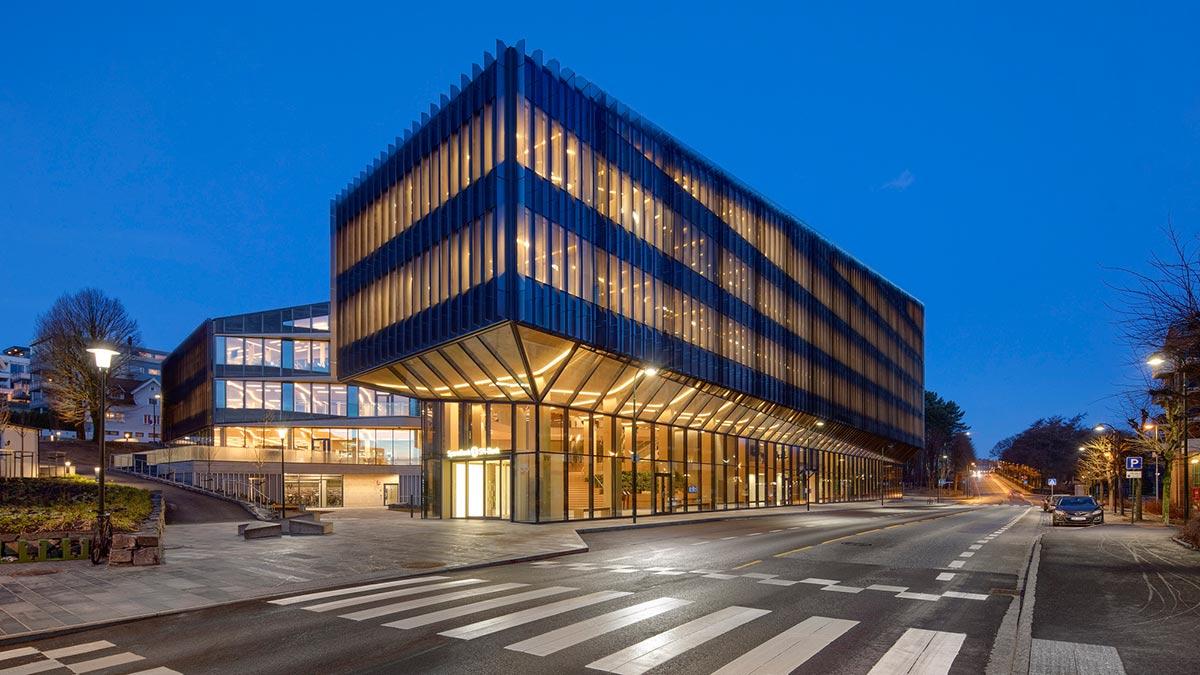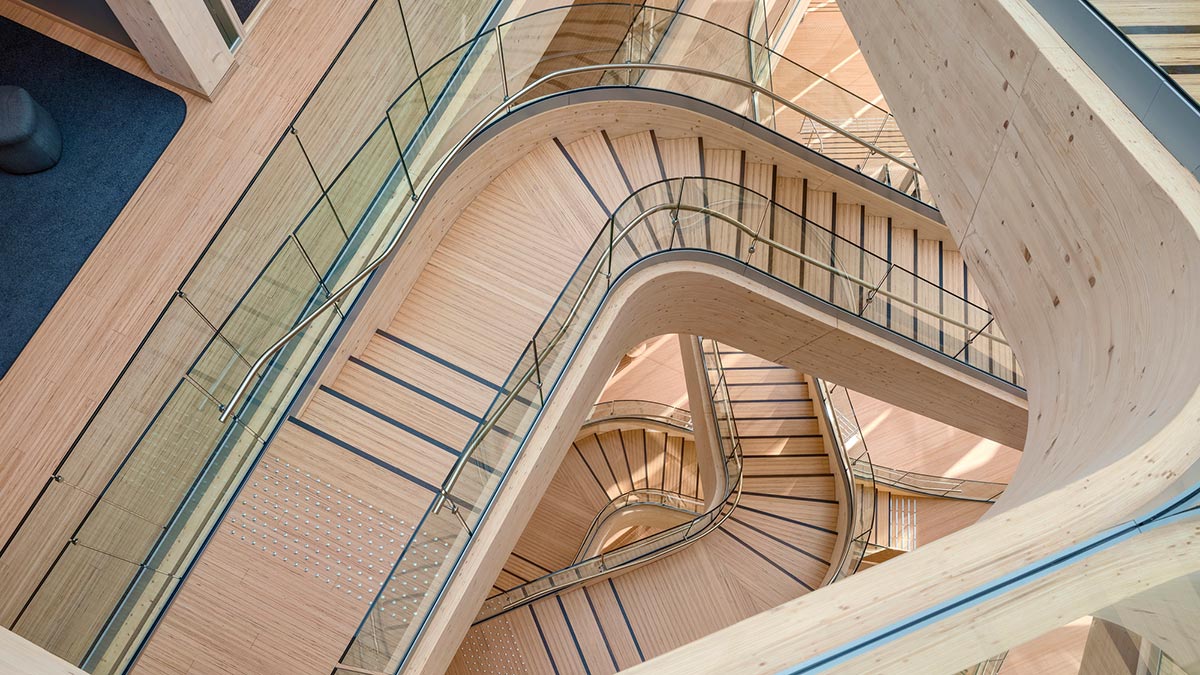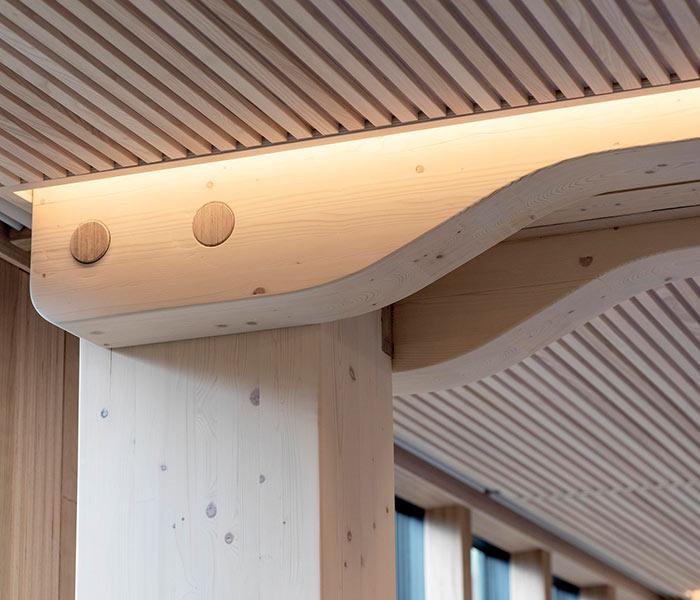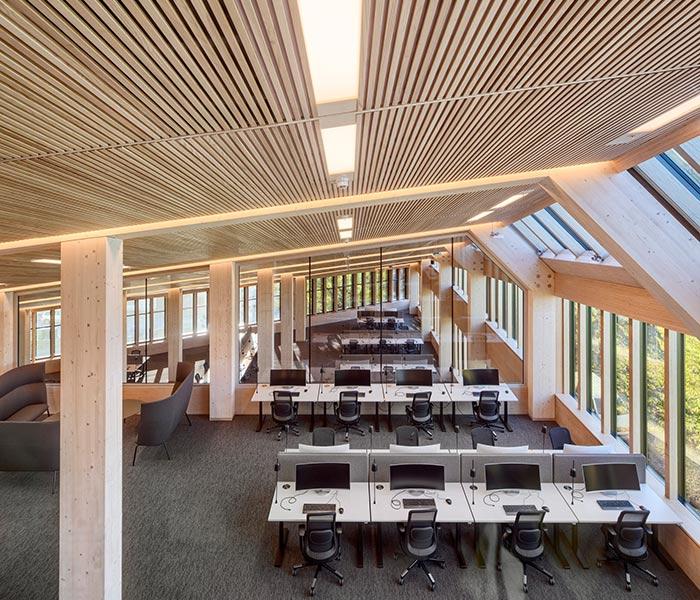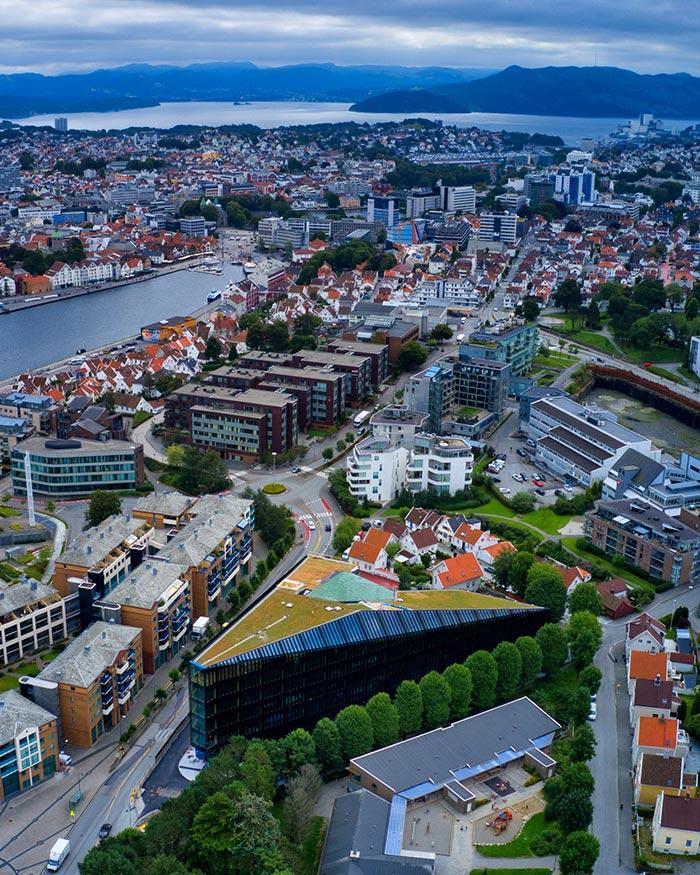High-tech timber for Norwegian banking
Timber construction can be decidedly high-tech, as illustrated by the head office built for SR Bank in Stavanger, Norway. Bjergsted Financial Park offers workplaces that are fit for the future, and it is among Europe’s largest engineered timber buildings.
The stylish, glossy exterior with its angular design contrasts the warm, rounded timber surfaces in the interior, which stand out against the glass facade. Its well-lit atrium is the heart and hub of the building. Employees and visitors can access the different sections and storeys via a sculptured timber staircase, while linear lighting accentuates the organic shapes and adds futuristic elements to the architecture. These were the features designed by the Norwegian architectural offices Helen & Hard and SAAHA to create a “contemporary typology for a bank”.
Workplaces fit for the future
This design was developed for the new SR Bank head office, which goes by the name of the Bjergsted Financial Park. Its objective and aspiration were to develop a bank that can give something back to its customers and the region. The winning architects intended to build “future workplaces made from natural materials” – mainly with timber, which is used as a renewable raw material throughout the building.
These workplaces offer not just a healthy and inspiring environment, but also make a considerable contribution towards reducing the carbon emissions during the building process.
Njål Undheim, architect at Helen & Hard
A statement by the architect responsible for the project, Njål Undheim at Helen & Hard, reads: “Future workplaces made from natural materials offer not only a healthy and inspiring environment but also substantially contribute to reducing the carbon emissions of the building process.”
Commenting on the collaboration with Création Holz, the architects explain: “Together with the Swiss engineering team Création Holz we wanted to create a visible and innovative timber-construction that inspires a unique spatial experience.”
Timber craftsmanship from Austria
The beech glulam beams and the wooden connectors with large-sized beech dowels are visible all through the structure, and they are deliberately used as a stylistic device. “The narrative of how the building is made is clearly readable and celebrated,” explains Undheim. Shaped with organic curves, the constructional timber elements clearly exceed purely functional boundaries.
The narrative of how the building is made is clearly readable and celebrated.
Njål Undheim, architect at Helen & Hard
Glulam specialists Hasslacher Norica Timber delivered the prefabricated construction elements. Based in the Austrian state of Carinthia, their history of processing wood goes back as far as 1901. Over the decades, what was once a rural pulp mill has grown into an international company with around 1,800 employees working at eight sites. Hasslacher was also involved in one of Europe’s largest timber construction projects, the Gare Maritime in Brussels.
Extended lifecycle
Covering a surface area of 22,500 m² on seven floors, Bjergsted Financial Park is also among Europe’s largest engineered timber buildings.
Even during the initial conception of the building, the architects planned to extend the lifecycle and gave thought to its later usage. “The building’s lifecycle is prolonged by its ability to house flexible spaces made by multiplying and subdividing the 5.4 m structural grid,” the architects say.
Its slanting roof allows the triangular-shaped cubature to slot into its urban surroundings. At its highest point, the building contains seven storeys – but it is only half as tall at the sides, to avoid overshadowing the small timber houses on the opposite side of the street.
It was one of the architects’ main concerns that the project should treat its existing surroundings with the greatest respect: “Bjergsted Financial Park opens up towards the town and creates a generous connection between the building and its surroundings, opening a dialogue between the old and the new.”
Text: Gertraud Gerst
Translation: Rosemary Bridger-Lippe
Images: Sindre Ellingsen, Helen & Hard
